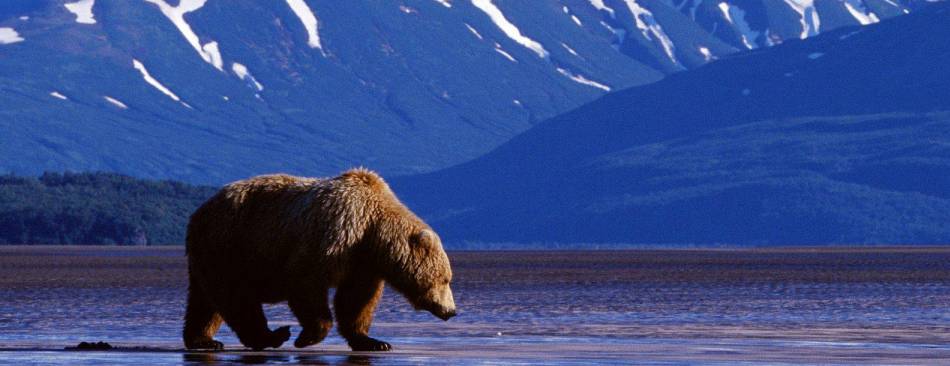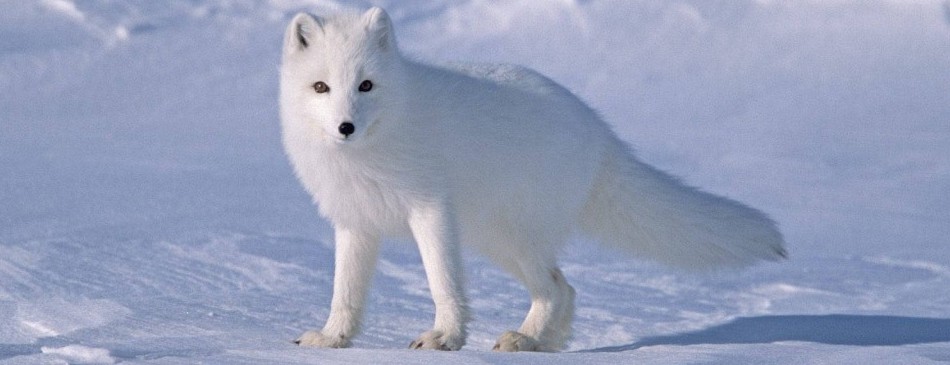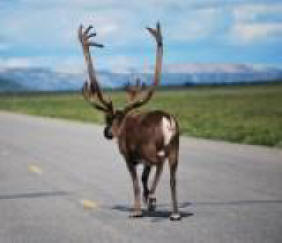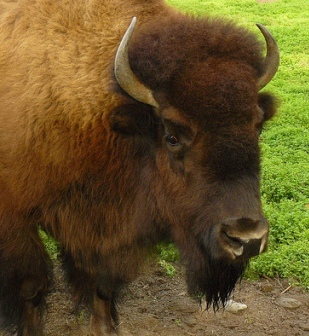|
During the Ice Age, steppe bison, the ancestors of modern bison, migrated into Alaska from Asia, crossing the Bering Land Corridor. Far larger than modern buffalo, with longer horns, these giant herbivores shared the tundra of prehistoric Alaska with wild horses, wooly mammoths, and western camels. As ice sheets advanced and retreated, the migratory bison dispersed across North America. Temporary advancements of glaciers isolated populations, and bison evolved into two subspecies, wood bison and the smaller plains bison. The giant longhorn steppe bison became extinct.
Wood bison adapted to life in the north, grazing in the boreal meadows and forests of Alaska and Canada. The smaller plains bison thrived further south, and formed the famous buffalo herds of the American Great Plains. Wood bison disappeared from Alaska several hundred years ago, probably the result of hunting and changing habitat. American bison were introduced to Alaska in 1928. In 2003, there were approximately 900 wild American bison in Alaska. Their numbers are controlled by managed sport hunting, as predation is not common. Bison can occasionally be seen on their summer range from the Richardson Highway south of Delta Junction, on the Delta Junction Bison range and on the Delta Agricultural Project. Another sub-species of bison, the wood bison was once present in Alaska but is no longer. There are plans to reintroduce wood bison to Alaska in the near future.
Bison have horns that curve upward. The horns of a bull are larger and heavier than the horns of a cow. In late fall, a bison’s coat is a rich, dark brown. As winter progresses, the coat changes color and is lighter colored by spring. When the weather warms, the hair loosens and hangs in patches until it is completely shed and replaced with new hair in the late spring. The hair on the chin resembles a goatee and is more pointed in wood bison. Older animals tend to have more hair on their heads.
Bison tend to remain in a home range, although they often move between seasonal ranges. Alaska’s wild bison do not remain in single herds, but occur alone or in groups ranging up to several hundred animals or more. In the Delta Junction area, they move up the Delta River in early spring to secluded meadows where they calve. This herd continues to move about in the area throughout the year. Alaska’s other wild bison herds also show seasonal movement patterns.
Most bison calves are born in May; however, they can be born from April to August or even later. Newborn calves have a reddish coat. They are able to stand when only 30 minutes old and within a few hours can run and kick their hind legs in the air. Calves start grazing at about 6 days of age, but they are not completely weaned until a few months later. Their reddish-orange coat begins to darken at about 10 weeks and turns dark brown about 5 weeks later. Cows are sexually mature at 2 years of age and give birth to a single calf in two out of three years on average, after a gestation period of about 9 months. Bison in Alaska have been known to live a relatively long time compared to other hoofed animals. One tagged bull in the Copper River area was over 20 years old.
Bison are grazing animals and in Alaska find food in meadows, around lakes, along rivers and in recent burns. Their diet consists mainly of various grasses, sedges, and forbs including vetch, a favored summer food found on gravel bars. Bison also eat silverberry, willow, and dwarf birch. Good bison habitat is now more limited than it was several thousand years ago, but the available habitat in Interior Alaska can still support several thousand of these animals
Bison hunts are among the most popular drawing hunts in Alaska. For example, with the Delta bison hunt, about 15,000 hunters apply for about 100 permits, and about 74 animals are harvested in that area. Statewide, bison harvest in Alaska has averaged 92 animals/year, and the vast majority are Alaska residents. On average, nonresidents harvest just two animals each year.
|








